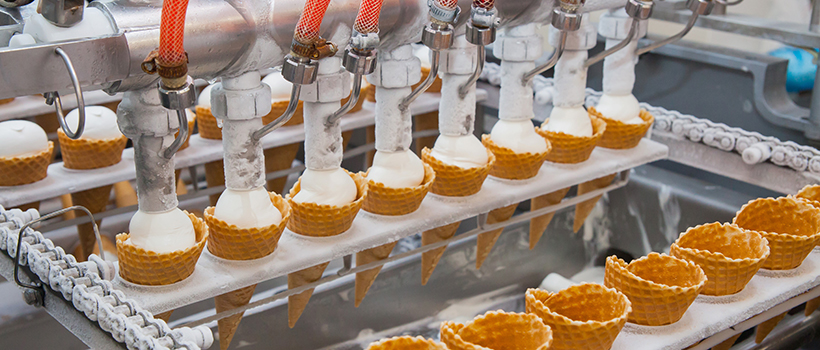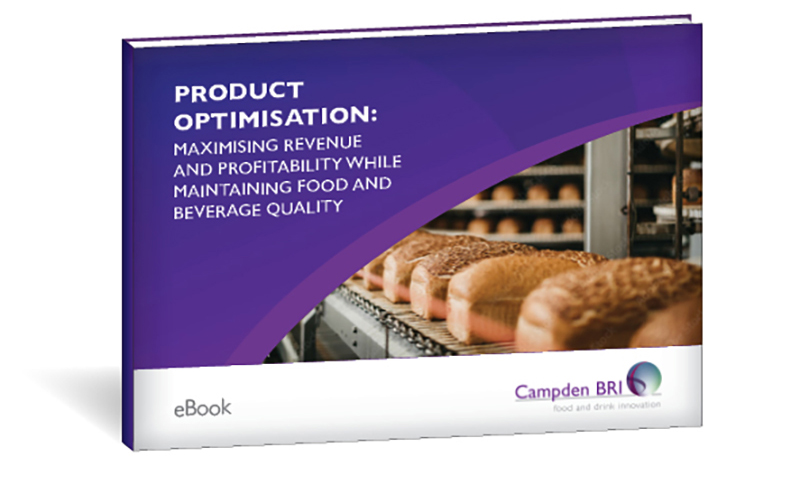
5 ways to benefit from food processing improvement strategies
21 February 2023 | Danny Bayliss, New Technology Lead
Food processing is the transformation of raw ingredients into food products. It includes a wide range of activities such as harvesting, cleaning, sorting, grinding, mixing, preserving and packaging. Food and beverage processing technologies are used to improve the efficiency and safety of these activities, as well as to extend the shelf-life and improve the quality of the final products.
By adopting advanced technologies and best practices, food processors can reduce waste, increase productivity, and create new revenue streams
Food processing optimisation is one method manufacturers have to support them with optimising costs and increasing profitability. By adopting advanced technologies and best practices, food processors can reduce waste, increase productivity, and create new revenue streams.

There are a variety of food processing improvement strategies that can be applied, depending on a manufacturer’s situation and needs, including:
1 Automation
Where practical, automation can help to reduce labour costs and improve consistency. For example, automated sorting and packaging systems can be used to reduce manual labour or even repurpose the labour for more added value tasks.
Developments in the robotic sector with collaborative robots will start to allow the technology to be more agile and easier to move around if needed. Processing around people without heavy restrictive guarding is now a possibility. Developments in gesture control programming may also make the technology more user friendly and accessible where there are labour and skills challenges.
2 Process optimisation
By optimising each processing step, and identifying and addressing bottlenecks in the overall operation, it is possible to improve efficiency and reduce waste. This can be achieved through the use of advanced technologies, such as computer simulations and digital twins, and process control systems. These systems can also perform future scenario testing to further improve companies’ processing efficiencies.
It is also important to challenge existing processes and practices such as the length of mixing or the additional lethality of a process. Over mixing due to ‘business as usual’ may be wasting energy and preventing you from maximising throughput. Over processing with a thermal kill step is a safety margin but some processes may have too great a margin which will impact the efficiency and cost of production.
3 Improving energy efficiency and Upgrading equipment
With energy prices impacting the food and beverage industry in production, distribution and the wider supply chain, energy efficiency is a key focus for the sector. Many food processing operations are energy intensive, so there is often scope for cost savings by improving energy efficiency. This can be achieved by introducing energy-efficient equipment, such as new refrigeration systems, new developments in heat pumps and electrified technologies.
Potato based processing manufacturers have the ability to remove a heating stage when using Pulsed electric field technology (PEF) to treat potatoes before processing. This represents a large energy reduction and provides a time saving for production in addition to many other processing benefits, including reduced oil consumption and increased yield.
Newer versions of equipment can be more energy efficient. What’s more, they can often improve efficiencies, reduce waste and improve yields. As well as the improved performance that new equipment may offer, there is the reliability of the existing equipment to consider, especially in instances where regular breakdowns are costing downtime and efficiency losses. This needs to be balanced with the upfront equipment costs and return on investment, including considerations for installing new equipment and training staff to operate it safely and effectively.
4 By-product utilisation and waste valorisation
Many food processing operations generate by-products, such as peels, seeds and pulp. These by-products can often be used as feedstock for other industries, such as production of animal feed, biofuels and paper. As many manufacturers will have likely explored by-product utilisation and / or waste valorisation already, it is always good to revisit waste streams as new sectors emerge – they may have needs for different inputs.
Precision fermentation for ingredient production using microorganisms could be used to repurpose waste streams into various higher value ingredients, which could feed back into the production process or even open up further revenue streams.
5 Using new supply chains for ingredient production
Advances in cell culturing and precision farming offer a means of manufacturing ingredients with specific functionalities and product characteristics. These technologies also provide a new, secure supply chain for sourcing the ingredients that can be manufactured using these methods.
Having designer ingredients available in this way may allow manufacturers to further optimise their current recipes to introduce efficiencies and improvements, and to reduce and rationalise their ingredient portfolios.
It is likely that, since initially developing your product, new and improved technologies now exist that can significantly improve your manufacturing process
Optimise now for a more profitable future
It is likely that, since initially developing your product, new and improved technologies now exist that can significantly improve your manufacturing process. Food processing technologies can be used to optimise costs and introduce efficiencies of processing, and to improve quality of food and beverage products. By adopting advanced technologies and best practices, you can benefit from reduced waste and increased productivity, create new revenue streams, and unlock elusive value and potential from your products.
How can we help you?
If you’d like your business to benefit from new food processing technologies, contact our support team to find out how we can help
Download our FREE Product Optimisation eBook today!
Explore different strategies to maximise your product revenue and profitability without compromising quality.







